
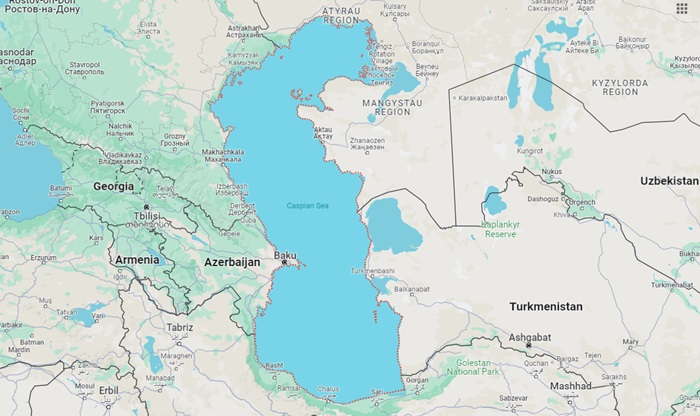
The Caspian Sea is the world's largest inland body of water, located between Europe and Asia. Its size is an estimated 371,000 square kilometers, making it larger than Japan and slightly smaller than the states of Montana and Wyoming combined. Its total shoreline is 7,000 kilometers. The Caspian Sea is bordered by five countries: Russia, Kazakhstan, Turkmenistan, Azerbaijan, and Iran. It is fed primarily by the Volga, Ural, and Terek Rivers, while the Kura, Sefid Rud, and Atrek are its principal tributaries. Nearly two-thirds of the Caspian Sea's area is within the borders of Russia. The Caspian Sea is often considered to be an inland sea because it is completely surrounded by land. It is not connected to the ocean, which means that it is not part of the World Ocean. It is also considered to be a lake because it is not part of a larger body of water and because it has a closed hydrological cycle.
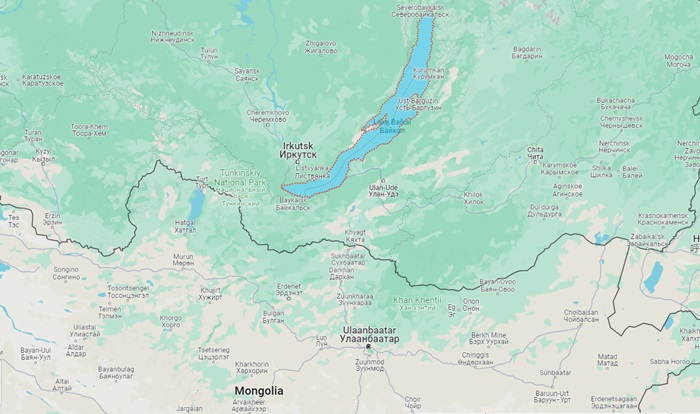
Lake Baikal is the world's largest freshwater lake located in the Russian region of Siberia. It covers an area of 31,722 square The lake is approximately 636 km long and 79 km wide, making it the largest and deepest lake in the world. It contains more than 20% of the world's total fresh water. The average depth is about 744 meters and a maximum depth of1642 metres. Lake Baikal is a UNESCO World Heritage Site and is home to a variety of flora and fauna, making it a unique and fascinating place.
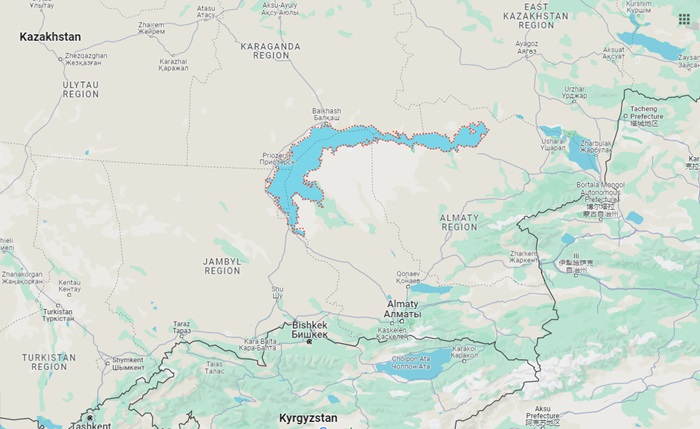
Lake Balkhash is a large lake located in Central Asia, between Kazakhstan and China. It is the 15th largest lake in the world and the second largest in Central Asia. It has an area of approximately 16,400 square kilometers and a maximum depth of 26 meters. The lake is divided into two parts by the Balkhash Peninsula. The northern part is called the Small Balkhash, while the larger southern part is the Big Balkhash. The two parts are connected by a narrow channel. The lake is fed by two rivers: the Ili River and the Karatal River. It is also fed by several smaller rivers and seasonal streams.
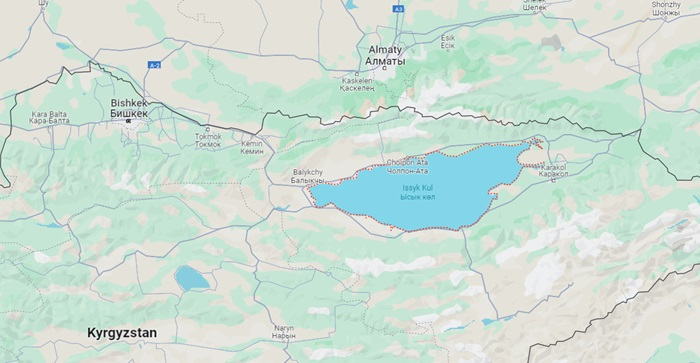
Lake Issyk-Kul is a large, high-altitude lake located in the eastern part of Kyrgyzstan in Central Asia. It is the third largest saline lake in the world, with a surface area of 6,236 square kilometers. The lake is approximately 178 kilometers long and 60 kilometers wide, and its maximum depth is 668 meters. The lake is surrounded by the Terskey and Kungey Alatau mountain ranges, which provide a stunning backdrop in the form of snow-capped peaks. The lake's elevation is 1,607 meters above sea level, and it is fed by over 200 small rivers and streams, including the Sasyk and Djalal-Abad rivers.
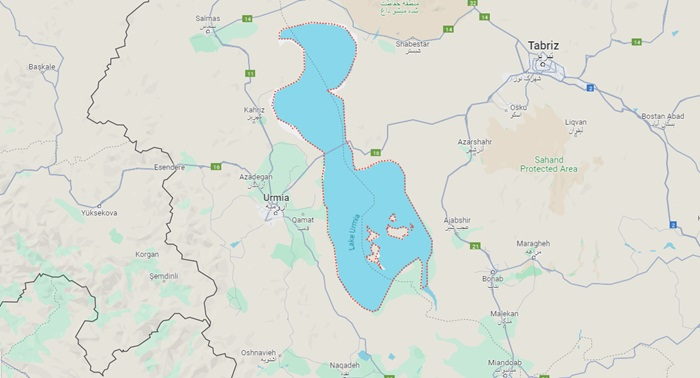
Lake Urmia is a large salt lake in northwest Iran. It is the largest lake in the Middle East and the sixth-largest saltwater lake on Earth. The lake covers an area of approximately 5,200 square kilometers. The lake is situated in a depression in the province of East Azerbaijan and is part of the Urmia Lake National Park. It is fed by numerous small streams, as well as several major rivers, such as the Simineh River and the Zarrineh River. The lake is connected to the Caspian Sea by a narrow channel. Lake Urmia is known for its stunning blue and turquoise waters, which are the result of its high salt content. The lake's salinity is more than three times the salinity of the ocean, giving it a brackish character. The lake's salinity is also responsible for its unique ecosystem, which is home to a variety of species, including several species of fish and migratory birds.
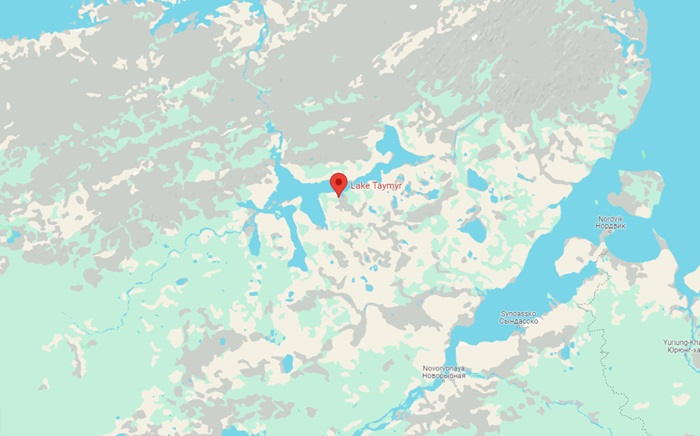
Lake Taymyr is a large lake located in the Taymyr Peninsula of northern Siberia, Russia. It is the largest lake in the Arctic Circle. The lake has an area of 4,560 square km and its maximum length is 204 km. The lake is also home to many species of fish, including pike, burbot, whitefish, peled, and grayling. The lake also serves as a home to many birds, including loons, cormorants, ducks, and gulls. Lake Taymyr is a natural wonder of northern Siberia and a popular destination for tourists.
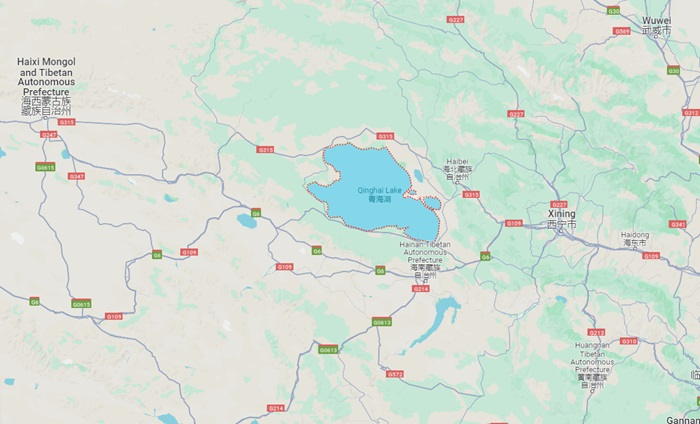
Qinghai Lake, located in the middle of the Qinghai-Tibet Plateau in China, is the largest lake in the country. Spanning an area of 4,543 square kilometers, the lake is surrounded by grasslands, mountains, and desert, making it a stunningly beautiful place to visit. The lake's shoreline is known for its spectacular scenery, featuring jagged peaks, rolling hills, and a variety of wildlife. The lake is also home to a large number of bird species, including black-necked cranes, bar-headed geese, and brown-headed gulls. Qinghai Lake is also known for its crystal clear waters. The lake is fed by several small rivers and streams, and is fed by melting snow and rain.
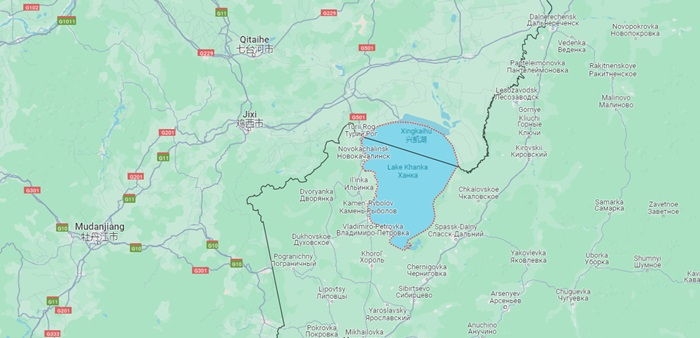
Lake Khanka, also known as Xingkai Lake, is a trans-boundary lake located between Russia and China. The lake has an area of about 4070 square km, making it one of the largest lakes in the region. It is situated in the middle of a natural depression, surrounded by the Primorsky Krai region of Russia and the Heilongjiang Province of China. The lake lies in a shallow basin, with a maximum depth of only 10 meters. It has a maximum length of 90 km and a maximum width of 45 km.
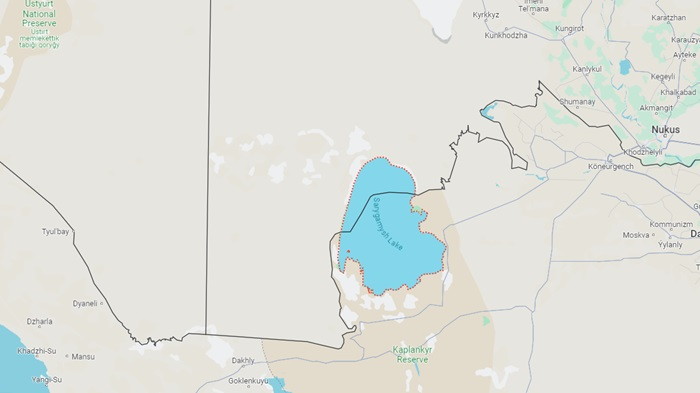
Sarygamysh Lake is a large lake located in the bordering region of Uzbekistan and Turkmenistan. The lake. It has an area of 3955 square km. It is approximately 125km long and 90km wide, making it one of the largest inland bodies of water in Central Asia. The lake is fed by the Amu Darya river, which flows from the Pamir Mountains in Tajikistan and into the lake from the northwest. The lake is surrounded by a wide variety of terrain, ranging from sand dunes to flat, grassy plains. Its geographical position makes it a destination for many migrating birds, and it is home to over 50 species of fish. The salinity of Sarygamysh Lake varies greatly throughout the year and is affected by the amount of precipitation in the region. During the summer months, the lake is relatively fresh, while during the winter months, it becomes more saline.
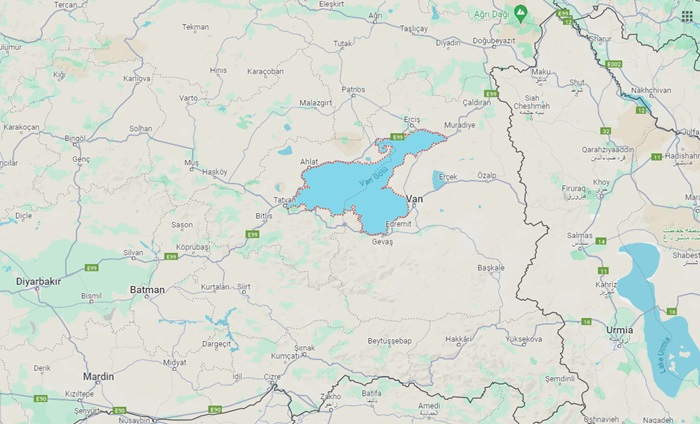
Van Lake is located in the Eastern Anatolia Region of Turkey and is the largest lake in the country. It is also one of the largest lakes in the Middle East, with a total area of 3,755 square kilometres. Van Lake has a maximum length of 119 km and a maximum depth of 451 metres. It is an endorheic lake, meaning that it has no outflows and its waters are generally saline. The lake is fed by numerous rivers and streams, as well as by rainfall and melting snow in the surrounding mountains.